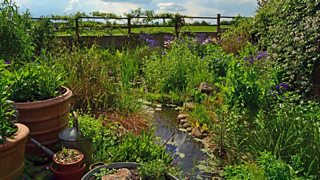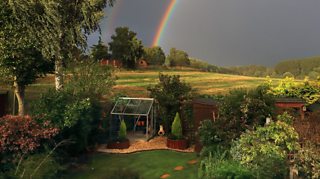It’s becoming increasingly important to understand our garden wildlife. Gardenwatch, the UK’s biggest-ever garden audit, was launched on 主播大秀 Springwatch in May 2019, and asked for information on garden features and wildlife across the country. We’ve had an amazing response, with well over 200,000 surveys completed in total, thank you to everyone who took part! The responses have given us fascinating new information on what people do to help wildlife in their gardens, and where there is still more that can be done.
Over 100,000 people told us about their wildlife-friendly gardening practices, from feeding badgers to leaving long grass to grow; an amazing response, thank you to everyone who took part!

Image by AndyorDij on Flickr
- With 45% of participants having a pond, it seems that advice about the importance of garden ponds is taking effect. However, the findings show that the proportion of gardens with ponds is lower in Scotland.
- Rock and stone piles were less common in southern England and particularly Essex. Rockeries can be an important habitat for insects and reptiles, and shelter for small mammals and amphibians, so people who do not naturally have rocks in their gardens could consider creating a rockery habitat.
- Log piles were a common feature in gardens, but still as many as 40% of gardens do not have a log pile. This is an easy habitat to create, which can support a huge diversity of wildlife, and could easily be installed in almost every kind of garden.
- Gardens in central England had lower uptake of wild areas, leaf piles and long grass, so this is a part of the country where people could consider creating some of these habitats.
- We found that lawns make up around half of the total area of people’s gardens, yet only 30% of people are leaving grass to grow long, which is a very simple and easy measure to improve the wildlife value of gardens.
- Only 42% of people reported leaving leaf piles; autumn is the perfect time of year to create this valuable wildlife habitat.
- The results suggest that climbing plants, such as wildlife-friendly Ivy, are more common in gardens in the south compared to northern England, Northern Ireland and Scotland.
- There is an obvious preference for boxes and food for birds, compared to resources for other kinds of wildlife. For example, the numbers of bird nest boxes were high compared to bat boxes and other 'homes for wildlife'. There was a reasonable uptake of bee and bug hotels, but these are more common in southern and eastern areas, suggesting that these could be something for people in other areas to consider.
- Hedgehog feeding and hedgehog houses are found in under 20% of gardens. With hedgehog numbers in severe decline, and the potential importance of gardens for this species, it could be especially rewarding for more people to consider garden resources to support hedgehogs. It is obviously important, however, to be aware of good practice.

Image by Tony Armstrong-Sly on Flickr
These are just a few of the preliminary results from the survey; all of the maps and figures can be . The results included a range of garden types, suggesting that they are broadly representative of UK gardens more generally. In future this information on wildlife-friendly practices will be linked to the results on garden wildlife from the other Gardenwatch ‘missions’, on birds, invertebrates and mammals, in order to help us understand how important these features really are for wildlife.
Gardenwatch is a collaboration between the Watches, the and the .
